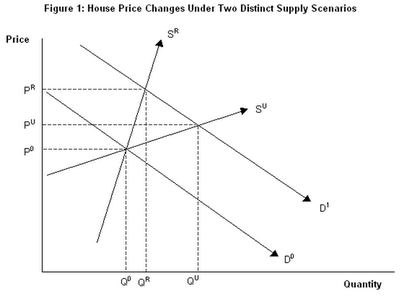From the usually more astute (climate change accepted) Terry McCrann:
The surge in prices in the Sydney and Melbourne property markets is not a bubble. The surges are the consequence of the intersection of two secular shifts, which are producing a fundamental and likely permanent reassessment of global asset values and Australia’s in particular.
The first is the obvious one — the very low interest rates that prevail around the world and are accompanied by an extraordinary amount of fiscal deficit-creating and central bank-validating liquidity. The second is the desire of the rising Chinese affluent class to buy property in the developed world. This is dramatically leveraged in the case of Australia, in both the established and new housing markets.
It is the exact opposite of the dynamics in the market for our biggest export, iron ore. There, too much and expanding supply is chasing a static volume of demand, and so prices have fallen. In Melbourne and Sydney property, too much demand is chasing relatively fixed supply, and so prices are rising.
Add this from the FT:
China is finalising plans that would allow individuals to invest directly in overseas financial assets, further loosening capital controls as it seeks official reserve currency status for the renminbi.
The renminbi, once so tightly controlled that overseas visitors were restricted to parallel bank notes, is today freely convertible for trade purposes but strictly curbed on cross-border investment. That too is changing via a series of programmes to encourage freer capital flows, even as recent data indicate the country is grappling withrecord capital outflows.
…The latest move would enable Chinese individuals to buy overseas stocks, bonds and real estate directly rather than pick from a handful of government-approved foreign mutual funds as they are now obliged to do, state media reported this week.
Thank goodness for the Abbott Government’s new FIRB regime for property! The concern is that this wave of investment sloshing around the world will exacerbate already overheated asset markets. Bulls like McCrann will seize upon this as destiny for higher prices in realty or shares (even though I might add it’s now illegal).
But McCrann is wrong to declare this a structural shift (and therefore not a bubble). The primary impact across the cycle will not be higher prices but increased volatility. Chinese investors are as smart and as stupid as every other group on earth and if left unchecked this new flow of savings will increase the amplitude of price movements both up and down.
I can vouch for this through personal experience. When I worked in the foreign property investor sector in 2008-09, hot Chinese investment in Australian property collapsed, so much so that for a time banks sharply raised lending standards on exposed developments. The same thing will happen during the next shock.
Economics 101 tells us to expect just this. Contrary to McCrann’s argument, iron ore and property are very similar markets. Both markets have inelastic supply that’s been hit by a surge in demand. Needless to say both have seen rocketing prices as a result, both has also seen delayed supply responses and both will also see price declines as the cycle ends. Such a situation can be explained using basic supply and demand analysis, as shown in Figure 1.
Q0 and P0 represent the initial equilibrium situation in the housing market. Initial demand is provided by D0, whereas supply is shown as either SR (restricted) or SU(unrestricted), depending on whether land supply constraints exist.
Following an increase in demand, such as a surge of investors following changes to tax rules (e.g. Australia’s CGT reduction in 1999), the demand curve shifts outwards from D0 to D1. When land supply is restricted, house prices rise sharply from P0 to PR. By contrast, when supply is unrestricted, prices rise more gradually from P0 to PU.
The situation works the same way in reverse. For example, if there was a sharp fall in demand following a contraction in credit availability or a sharp decrease in Australia’s Terms of Trade, causing demand to fall from D1 to D0, then prices fall much further when land supply is constrained.
The key point of this analysis is to show that declines in demand can bring sharply falling house prices even when supply is constrained and housing shortages exist. Contrary to McCrann’s claims that Australia’s Chinese property surge is a structural shifts upwards it is simply another distended cycle.
This has already happened for the last two mini property cycles in Australia, up to 2008 and up to 2011. Each time had house prices been left alone they would have fallen despite claims of under supply. The decisive factor that prevented it was massive policy intervention in the market. Therefore, when considering the future of Australian property in this cycle (Chinese and all) the only question that really matters is can authorities bail it out again?
With fiscal policy headed for sovereign downgrades and monetary policy nearly exhausted, my answer is no.


